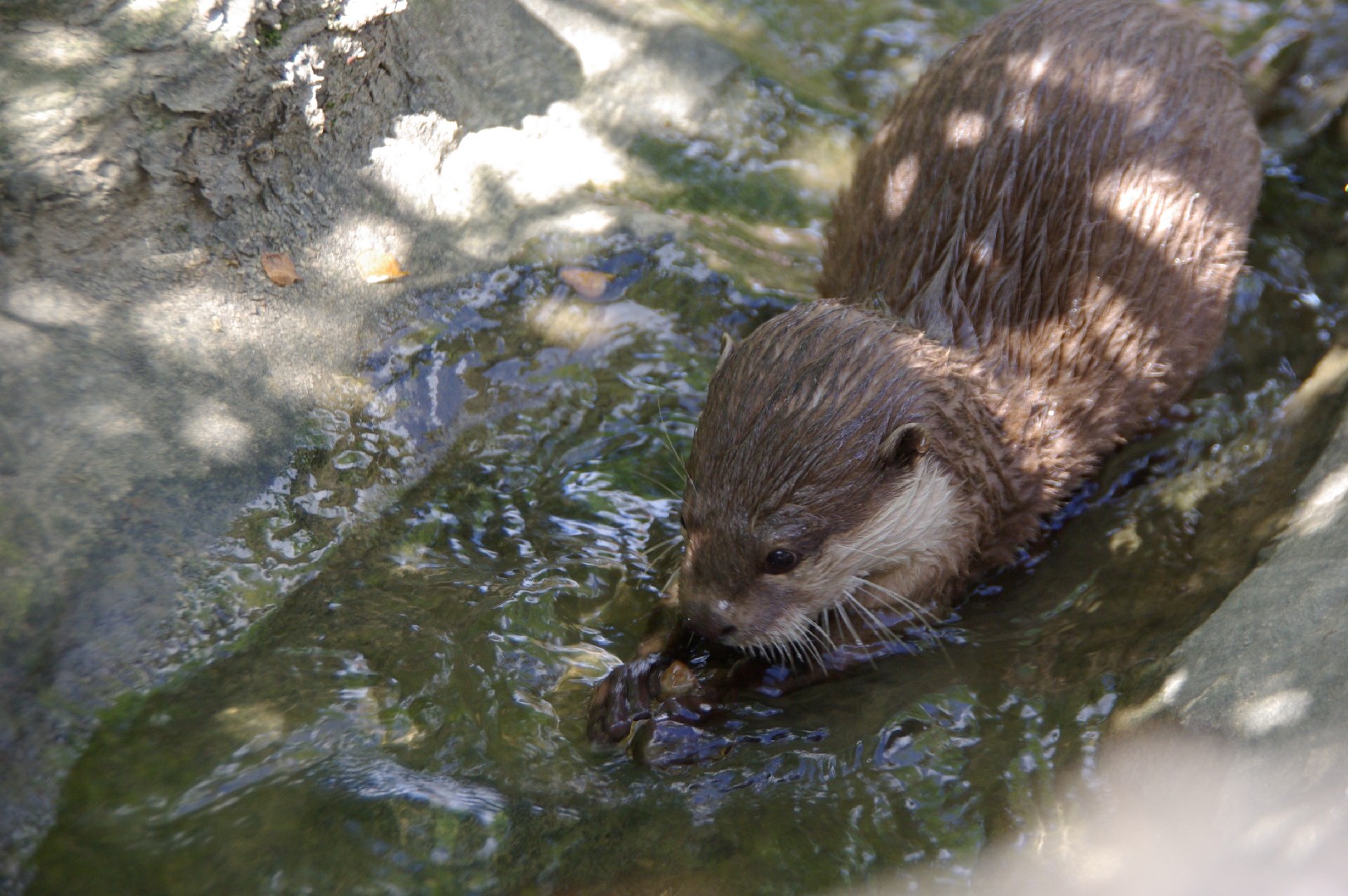Eurasian otter
A species of Old world river otters, Also known as Eurasian river otter, Old world otter, Eurasiatic otter Scientific name : Lutra lutra Genus : Old world river otters
Eurasian otter, A species of Old world river otters
Also known as:
Eurasian river otter, Old world otter, Eurasiatic otter
Scientific name: Lutra lutra
Genus: Old world river otters
Content
Description General Info
 Photo By LefrereReynou , used under CC-BY-SA-4.0 /Cropped and compressed from original
Photo By LefrereReynou , used under CC-BY-SA-4.0 /Cropped and compressed from original Description
The Eurasian otter is a typical species of the otter subfamily. Brown above and cream below, these long, slender creatures are well-equipped for their aquatic habits. Their bones show osteosclerosis, increasing their density to reduce buoyancy. This otter differs from the North American river otter by its shorter neck, broader visage, the greater space between the ears and its longer tail. However, the Eurasian otter is the only otter in much of its range, so it is rarely confused for any other animal. Normally, this species is 57 to 95 cm (22.5 to 37.5 in) long, not counting a tail of 35–45 cm (14–17.5 in). The female is shorter than the male. The otter's average body weight is 7 to 12 kg (15 to 26 lb), although occasionally a large old male may reach up to 17 kg (37 lb). The record-sized specimen, reported by a reliable source but not verified, weighed over 24 kg (53 lb). 
General Info
Lifespan
10-15 years
Diet
Eurasian otter is predominately piscivorous, with fish forming the bulk of its diet. Alongside their piscine preference, it also consumes amphibians, crustaceans, and occasionally small mammals and birds, often dictated by seasonal availability.
Appearance
Eurasian otter is a medium-sized mustelid with a sleek, slim body and dense fur. Its coat is brown, often appearing darker when wet. Eurasian otter has a conspicuous white or cream patch under the chin. The tail is robust and thick, almost half the animal's total length, helping it to swim and dive proficiently. No significant differences in appearance between sexes and ages have been noted.
Behavior
Eurasian otter is largely solitary and nocturnal, indulging in its primary activity of foraging mostly at night. It marks territory using scent from anal glands, cautioning other members of its species. Notably, it's skilled at swimming and hunting underwater, foraging for a diet largely consisting of fish and aquatic invertebrates. The species also partakes in unique 'water dances', a rare play behavior.
Population
Decreasing
Scientific Classification
Phylum
Chordates Class
Mammals Order
Carnivores Family
Mustelids Genus
Old world river otters Species
Eurasian otter